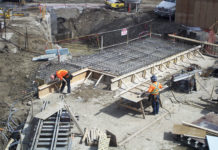Now that winter has (finally) gone for good, it’s time to bring out the bicycle. But do you know how to stay safe pedaling around town? Whether you’re in Waterloo, Toronto, or anywhere else, brush up on the laws and safety tips cyclists need to know.
1. Act like a vehicle – just a hard to see one
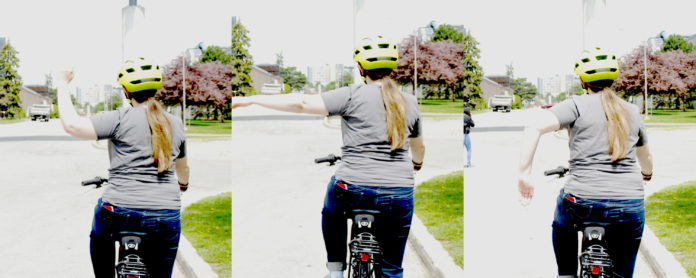
Bicycles are considered a slow-moving vehicle under Ontario laws, so act like one. Follow traffic signals and signs. Clearly signal your turns and stops ahead of time. Use the appropriate lane to make turns. Always make sure you have space to stop and avoid obstacles safely.
Avoid cycling on sidewalks and pedestrian crossings, and walk your bike in pedestrian-heavy areas. This again makes you predictable to motorists and places you in areas they will be looking.
There are times when a motorist — or even another cyclist — won’t treat you like a vehicle. Always make sure when taking the right of way, changing lane position and making turns that the traffic around you can see you and are giving you the space you need to stay safe.
The exception: saving yourself from injury and death is ultimately your most important consideration. If a motorist does something that risks your life, take the steps you need to stay safe.
2. Bike in as straight a line as possible, as close to the right curb as possible.
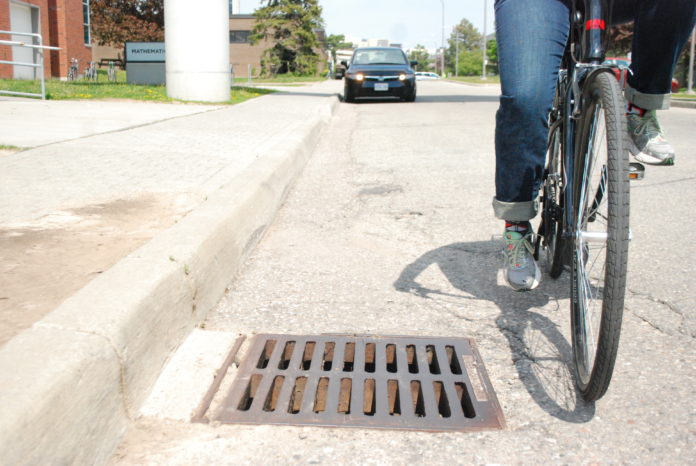
Avoid being so close to the curb that you have to weave around sewer grates, parked cars, and potholes. This makes your path predictable to motorists — one of the best ways for you to stay safe.
The exception: if you’re traveling the same speed as cars, the road is too narrow for cars to safely pass, you’re on a one-way road (then the left curb is also acceptable)
3. Use bike lanes where they exist.
King St. North and parts of Weber and Westmount are busy roads without bike lanes. Cars may not give you a safe amount of space when passing. Take alternate routes when you can, such as roads with bike lanes like University and Columbia, less busy side streets, and multi-use or bicycle paths.
If you do need to use busy roads without bike lanes, remember to stay predictable and visible.
4. Be ready for anything
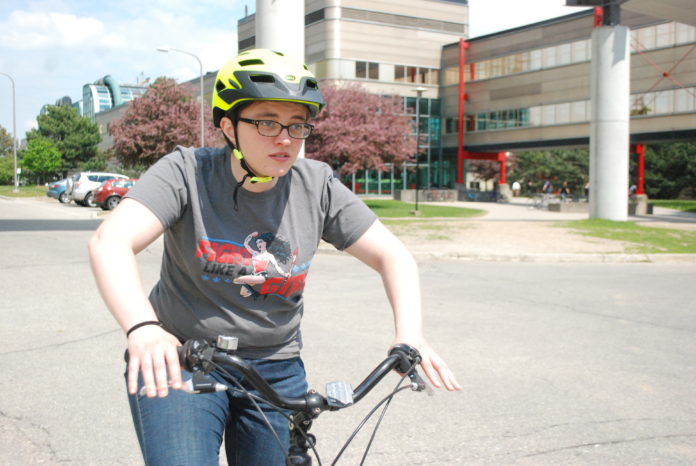
No matter how safe you ride, accidents can (and will) happen. Always be aware of the traffic around you by looking well ahead to anticipate hazards, doing frequent shoulder checks before moving to the left or right or stopping, and make eye contact with motorists and pedestrians to confirm they can see you.
5. The must-have equipment list
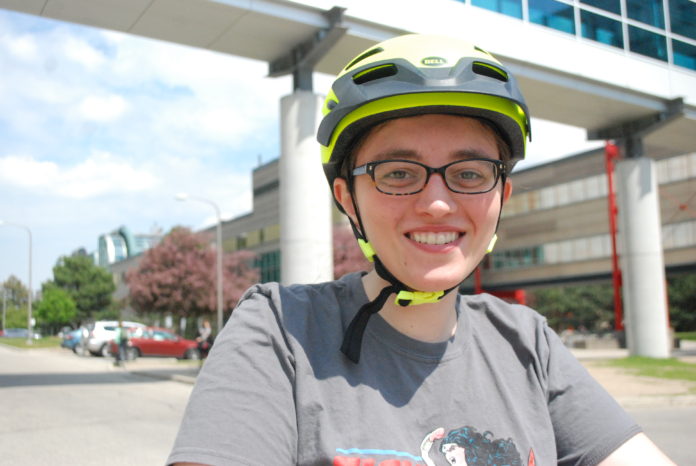
Lights
White or amber front light, red back-light or reflector, and reflective material (tape or otherwise) on both ends of your bike.
Why?: Legally required ($110 fine), and makes you more visible at all times
Cost: $10 – $30
What to look for: LED, high brightness, waterproof, and removable. Different settings are also a plus. A flashing backlight catches more attention than a reflector.
Helmet
Why?: You’re in university, you need that brain. Don’t waste that tuition.
Cost: $30+
What to look for: A snug, comfortable fit so the helmet won’t move during impact, reflective material, and certification. In Canada, these include CSA, EN, ASTM, CPSC, Snell B90/B95, and CPSC (info courtesy MEC.ca).






























